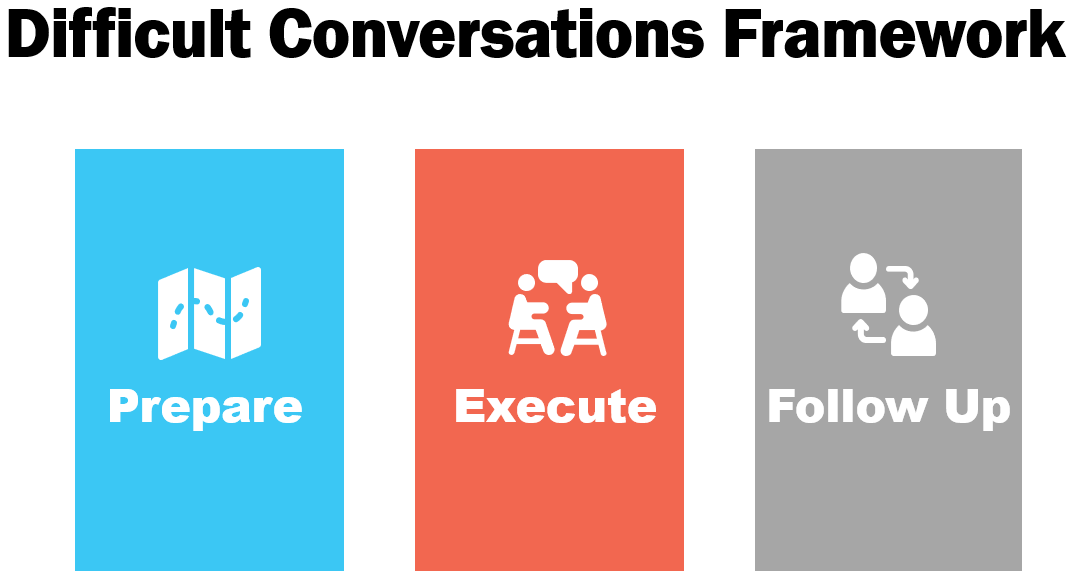Our three-step process supports managers in having difficult conversations around DEI to create solutions that improve company culture and eliminate microaggressions at work.
Author:
Dr. Marshaun R. Hymon | Senior Director, Learning & Advisory Services | LinkedIn

At Grads of Life, we know that people thrive when companies prioritize, and live up to, their diversity, equity and inclusion (DEI) commitments. But as our client engagements often uncover, employees may not always feel empowered to express their concerns about their organization’s culture. For employees of color in particular, the consequences of raising DEI challenges can be steep.
We previously wrote about how managers can better navigate conversations around race and difference in the workplace, but we know that is just the start. For true DEI disruptors, taking action when inequity shows up means more than tending to the immediate impact on marginalized employees; it means escalating concerns, with proper consent, and advancing solutions for root causes. Below we provide a three-step framework to support managers in having difficult conversations regarding DEI/cultural issues, dealing with microaggressions at work, and reaching favorable outcomes with senior leaders and executives.

Step One: Prepare
The preparation phase is the longest and most crucial step in the process. The way that you approach this step may vary depending on how the issue came to your attention. Maybe a direct report or other colleague approached you in confidence with a cultural pain point. Maybe you witnessed microaggressions at work in action. Whatever the situation, get clear on these three things:
- First, consider context and why a difficult conversation is necessary.
-
- What was said or done?
- What body language did I notice?
- Who was impacted? Why/how?
- What was the intention?
- What was the impact?
-
- Second, pause to understand the needs of each party: you and the leader.
-
- What are my/their concerns?
- What are my/their beliefs?
- What are my/their motivations?
- What data/research/examples will I need to influence the other party?
-
- Third, determine a few desired outcomes for the conversation. To begin this brainstorm, consider these guiding questions:
-
- What does a successful conversation look/feel like?
- Do I need a leader to understand the experience of employees?
- Do I need a leader to do something?
-
Based on your desired outcome, go into the conversation with two to three potential solutions prepared. Being able to clearly recommend what a good outcome looks/feels/sounds like at the end of your conversation will ensure the conversation does not go off the rails, and support clear next steps after the conversation. To be clear, your prepared solutions should be flexible and considered a starting point for taking action.
Step Two: Execute
Once you have prepared for your conversation, the second step is to execute the conversation. While the preparation phase is the longest and most crucial step in the process, the execution phase is typically the most difficult step in the process.
There are two steps to successfully executing a difficult conversation:
- First, it’s important that you express a desire to have a difficult conversation.
- Be clear that you would like to have a difficult conversation, as this will provide the other person an opportunity to ensure they have emotional capacity to engage. You must also find a mutual time and place to ensure a safe environment.
- Begin the conversation by providing the context and your perspective of the matter. Using “I” statements (e.g., “I feel,” “I think,” “I felt,” etc.) is a great way to minimize blaming, take ownership, and decrease the likelihood of the other party displaying defensiveness.
- Finally, invite the other party to provide their reaction to what you shared. Active listening is an important skill to employ during this stage of the conversation. Explore our active listening resource for support with your approach.
- Once you have expressed your perspective, you’ll want to build alignment.
- First, you will provide a recommended solution that you have already brainstormed in the first step, and work to gain agreement with the other party. Coming with recommendations demonstrates that you see this as a partnership and are willing to collaborate on a solution.
- Second, you must be prepared to mitigate misalignment. Your prepared recommendations may not work for the other party, so it will be important to find a common solution. Possible guiding questions include:
-
- What part of my recommendation does not resonate with you?
- What could make this possible?
- What do you need from me to implement this solution?
- What would you recommend in lieu of this idea?
- What would you recommend in lieu of this idea?
-
- Finally, you will need to close the conversation. Clearly rearticulating the challenge that you’ve come together to solve and restating the agreed upon solution will ensure that you are on the same page.
Step Three: Follow Up
Often, folks will successfully navigate a difficult conversation, develop agreements/action steps and the interaction ends there. However, we know that accountability is a key driver in achieving desired results. So, after you have completed your conversation, it is important to follow up. Two techniques support your ability to follow up:
-
- First, check in. Checking in provides you an opportunity to understand the other party’s experience with the agreement.
- Second, provide feedback. Providing feedback provides you an opportunity to express how you, your report and/or your team may be experiencing the agreement and actions that followed your initial conversation.
- On the pathway to resolution, you may also want to consider these questions:
-
- Have I followed up with an email to confirm understanding and next steps?
- Have I expressed gratitude for the other party’s engagement?
- Is the agreement working for me? How do I know?
- Is the agreement working for the other party? How do I know?
- Does the agreement need to be modified? In what way?
- How might I approach this differently in the future?
- Have I reinforced the agreement with feedback?
-
Having difficult conversations is just that: difficult. However, doing so effectively can not only solve workplace challenges, it can also build relationships and empathy among employees. Empathy, understanding and strong relationships are key ingredients in building cultures of inclusion in our workplaces.
Here is a Difficult Conversations Preparation Template to support in planning your next difficult conversation. Let’s embrace the power of difficult conversations to spur even greater inclusion and allyship.



